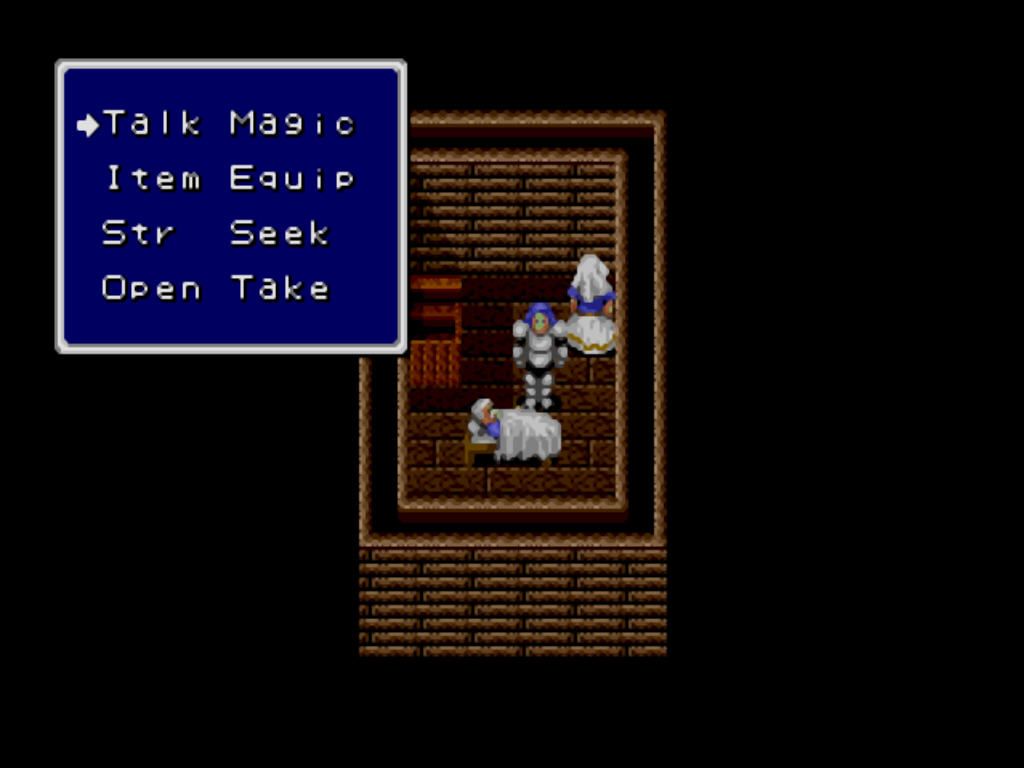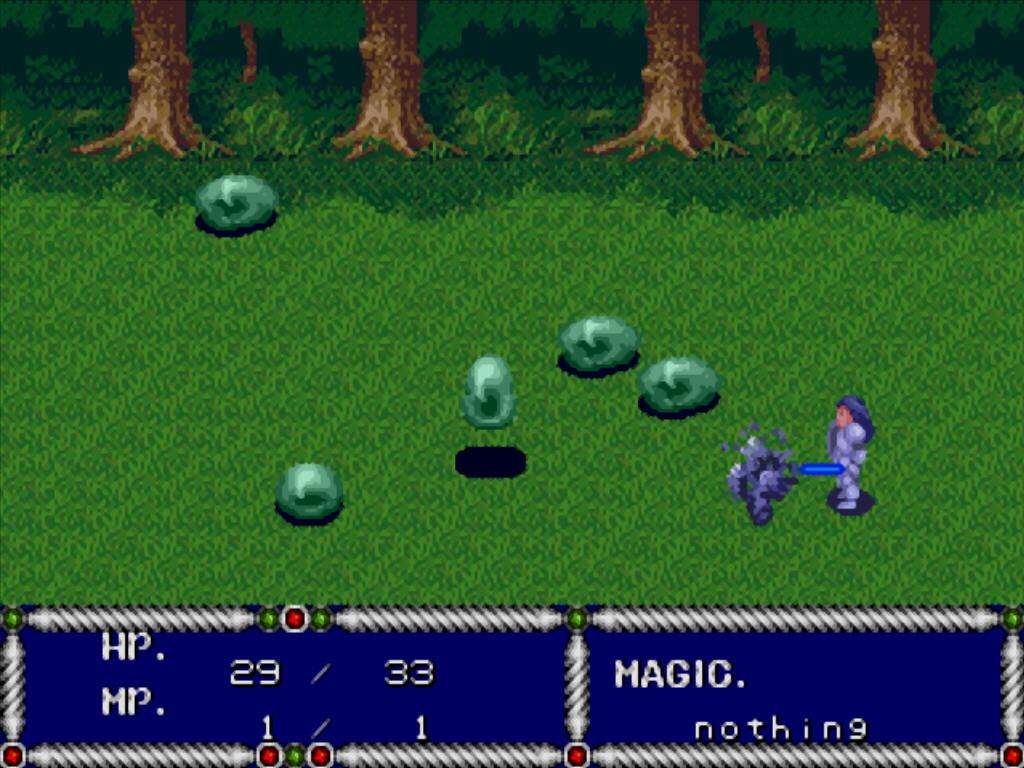Retro Replay Review
Gameplay
Sword of Vermilion delivers a unique blend of action-RPG mechanics by shifting between three distinct perspectives. When exploring towns, you’re treated to a classic third-person, top-down view that lets you interact with shopkeepers, gather information from NPCs, and stock up on vital supplies. This mode feels familiar yet refreshing thanks to fluid character movement and cleverly designed village layouts that encourage exploration.
(HEY YOU!! We hope you enjoy! We try not to run ads. So basically, this is a very expensive hobby running this site. Please consider joining us for updates, forums, and more. Network w/ us to make some cash or friends while retro gaming, and you can win some free retro games for posting. Okay, carry on 👍)
Outside the safety of town walls, the game switches to a first-person view for overland travel. While simplistic by modern standards, this mode lends a sense of scale to the world of Excalabria—you can see distant mountains, forests, and rivers, and occasionally stumble upon hidden entrances to caves or guarded strongholds. Random encounters with roaming monsters keep tension high, making you think twice before sprinting across an open field.
Combat sequences throw you into a third-person side-scrolling arena reminiscent of beat-’em-ups like Double Dragon or Final Fight. You’ll use sword slashes and shield blocks to fend off goblins, skeletons, and tougher boss creatures. Each of the eight Rings of Good you seek grants new abilities or stat bonuses, giving fights increasing depth. The real-time action demands quick reflexes and strategic use of items—healing herbs, magic scrolls, or special ring powers—to overcome powerful foes.
Graphics
For its era, Sword of Vermilion’s graphics were nothing short of impressive. Town interiors and street layouts are rendered with bright, crisp sprites, giving each region its own color palette and architectural style. From the brick roads of Castle Black to the sandy pathways of desert villages, the variety keeps your eyes engaged during lengthy exploration sessions.
The first-person overworld segments use simple but effective wireframe horizons and tile-based ground textures, achieving a surprising sense of depth while conserving system resources. Though rudimentary today, these sequences contribute to a feeling of immersion—you truly sense the vastness of the land as you search for distant dungeons.
Combat animations bring the side-scrolling battles to life: your hero’s sword shines upon impact, enemies recoil convincingly, and background details—like flickering torches or rolling clouds—add atmosphere. While modern gamers may notice pixelation and a limited color range, there’s an undeniable charm in the hand-crafted art style that defined early 16-bit RPGs.
Story
You begin as an unsuspecting young man working in your uncle’s mill, only to learn you’re the long-lost son of the benevolent King Erik. This classic hidden-royalty trope sets the stage for a grand quest: traverse the realm of Excalabria, recover the eight magic Rings of Good, and ultimately challenge the nefarious King Tsarkon. The narrative framework is straightforward but effective, giving each ring-recovery mission a clear purpose.
Along your journey, you’ll encounter a memorable cast of characters—from kindly village elders who offer cryptic wisdom to rogue bandits who demand you prove your combat prowess. Dialogue is minimal yet functional, often hinting at hidden dungeons or secret shortcuts. Boss encounters, such as battling the towering Gorgon or the frost-laden Ice Dragon, punctuate your progress with cinematic flair.
While the story doesn’t branch or offer complex moral dilemmas, it maintains momentum through constant goal updates and varied settings. Each recovered ring feels like a genuine achievement, and the looming threat of Tsarkon’s dark forces adds a satisfying sense of urgency. Though some plot elements rank as archetypal fantasy, the straightforward hero’s journey remains engaging from start to finish.
Overall Experience
Sword of Vermilion stands out as an ambitious early action-RPG that experiments with multiple gameplay styles. Its blend of top-down town exploration, first-person overworld travel, and side-scrolling combat offers a refreshing pace not often seen in contemporaries. The learning curve can be steep, especially during boss fights, but the sense of accomplishment when you overcome a challenging foe is deeply rewarding.
Modern players seeking nostalgia will appreciate the game’s retro charm and straightforward design, while newcomers interested in the roots of action RPGs can study how perspective shifts enhance engagement. Inventory management, ring-based progression, and varied enemy designs contribute to replay value—once you’ve beaten King Tsarkon, you may find yourself hunting for every hidden treasure chest or testing alternative combat strategies.
Despite dated graphics and occasional difficulty spikes, Sword of Vermilion remains a compelling experience that helped define Sega’s early forays into console RPGs. Its blend of simple storytelling, strategic real-time combat, and expansive world make it well worth exploring—whether you grew up with the Genesis or are simply curious about gaming history’s foundational titles.
 Retro Replay Retro Replay gaming reviews, news, emulation, geek stuff and more!
Retro Replay Retro Replay gaming reviews, news, emulation, geek stuff and more!









Reviews
There are no reviews yet.